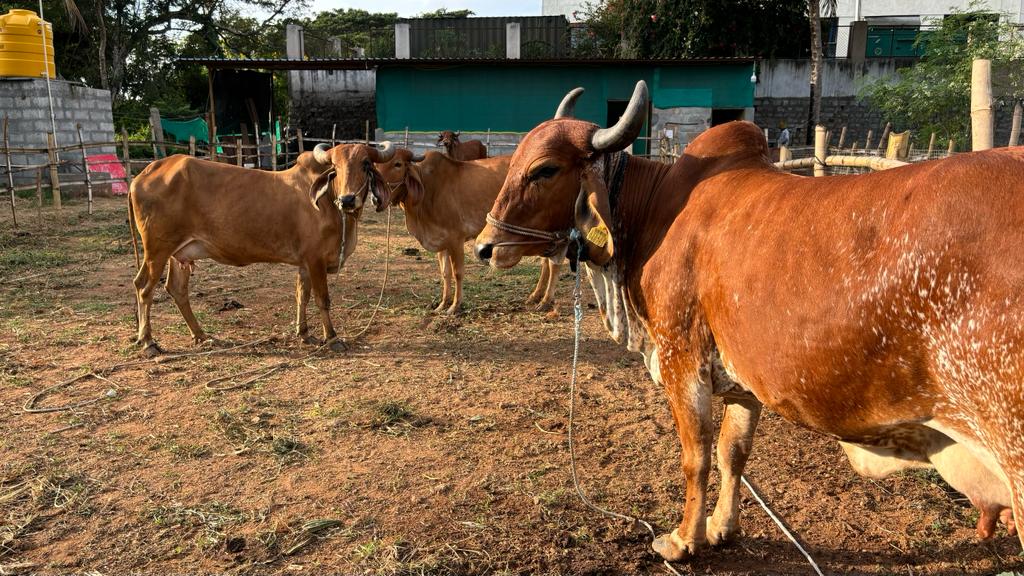Goshala
Mission: To safeguard, nurture, and propagate indigenous cattle breeds that hold deep cultural, historical, and ecological value. We are committed to the conservation and welfare of these treasured animals.
Our mission extends to reviving dwindling indigenous cattle populations, fostering sustainable agriculture, and promoting the significance of these breeds in our agricultural heritage.
Purpose
We aspire to create a future where these breeds regain their historical prominence, serving as a symbol of our connection to the land and our commitment to biodiversity. We see our Goshala as a sanctuary of hope and a hub for the revitalization of indigenous cattle populations, showcasing their contributions to holistic, eco-friendly farming practices.
Our vision is to be at the forefront of preserving indigenous cattle breeds and to inspire others to join us in this noble cause.
Ensuring the sustainability of a Goshala
This involves maintaining a balance between the well-being of the cows, environmental stewardship, and financial viability.

Milk Production: Gir cattle are primarily dairy cattle, and they are renowned for their high milk yield. They produce high-quality milk with a high fat content, which is in demand for making ghee and other dairy products. This milk can be a significant source of income for farmers.
Livelihood Security: Gir cattle are a source of livelihood security for many small and marginal farmers. By maintaining a Gir herd, farmers can have a consistent source of income through the sale of milk and dairy products.
Draught Power: In addition to their dairy capabilities, Gir cattle are used as draught animals in agriculture. They are strong and well-adapted to the Indian climate, making them valuable for plowing fields and transporting agricultural produce. This can reduce a farmer’s dependence on mechanized equipment and fuel costs.
Manure Production: Gir cattle produce significant amounts of organic manure. Their dung, when properly managed, can be used to improve soil fertility, making it an essential resource for crop cultivation. This reduces the need for chemical fertilizers, which can be expensive for farmers.
Genetic Conservation: The maintenance of Gir cattle helps in the conservation of this indigenous breed. Gir cattle have unique genetic traits that are well-suited to the Indian environment, and their conservation ensures that these valuable traits are not lost.
Income Diversification: By maintaining Gir cattle, farmers can diversify their sources of income. In addition to dairy and agriculture, they can also engage in breeding and selling Gir cattle, further contributing to their financial stability.
Local Economy Development: The maintenance of Gir cattle contributes to the local economy. It supports the livelihoods of farmers, generates income for local dairy industries, and helps maintain the agricultural backbone of rural communities.
Sustainable Agriculture: Gir cattle are well-adapted to local conditions and can play a role in sustainable and organic agriculture. Their presence encourages integrated farming systems, reducing the need for chemical inputs and promoting eco-friendly farming practices.

